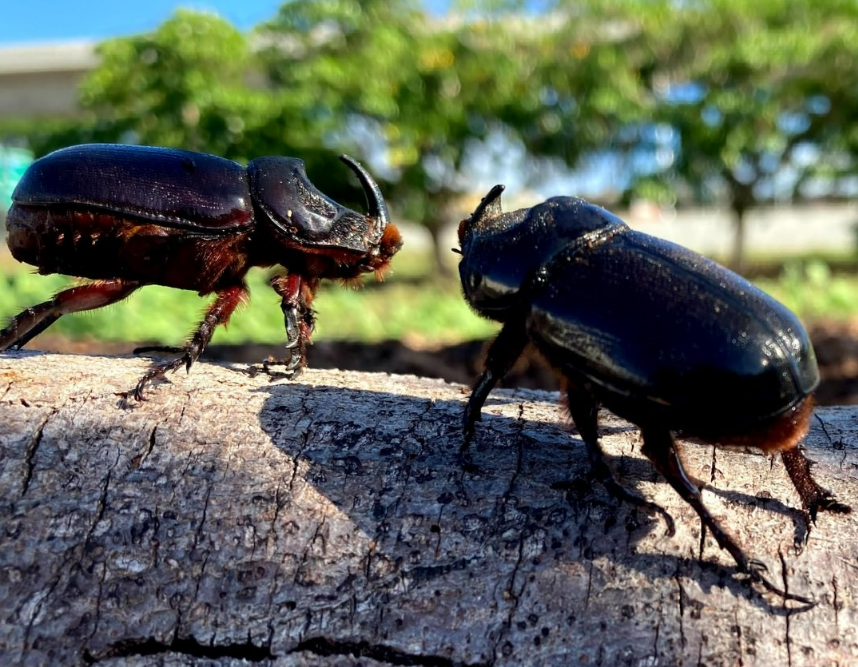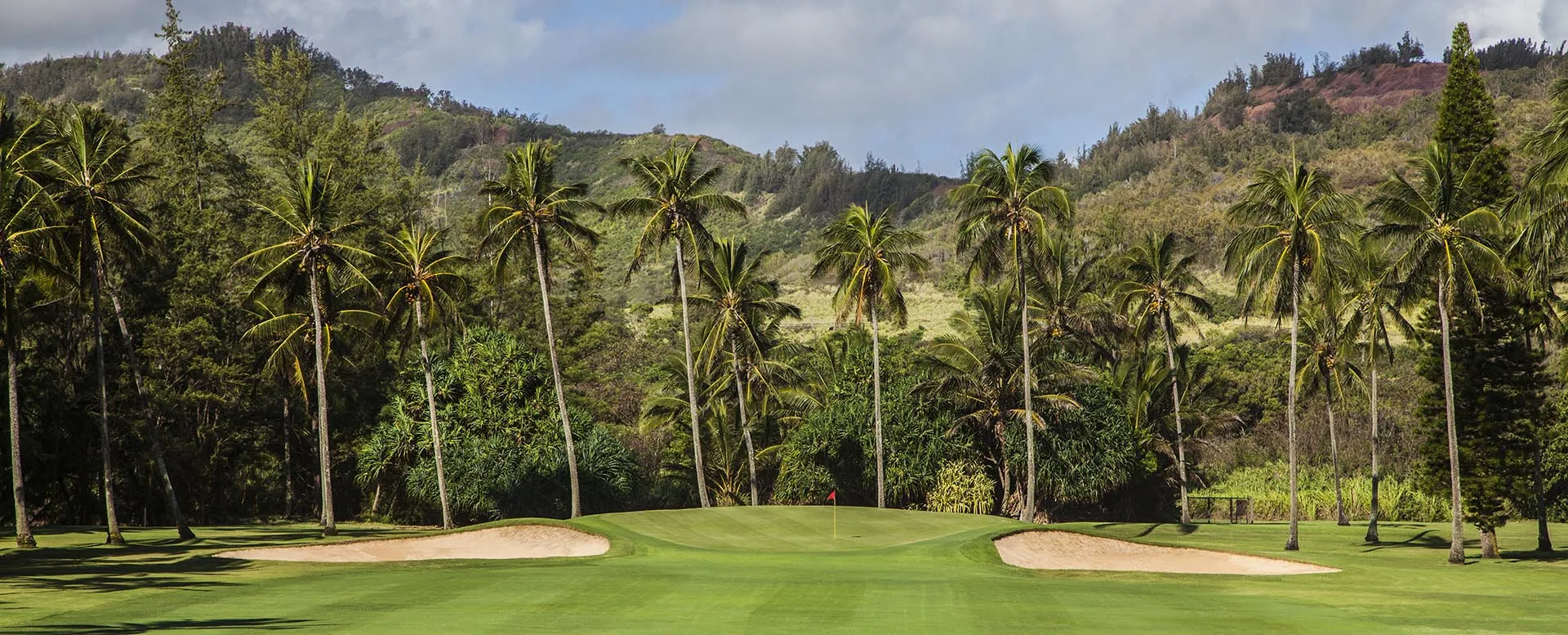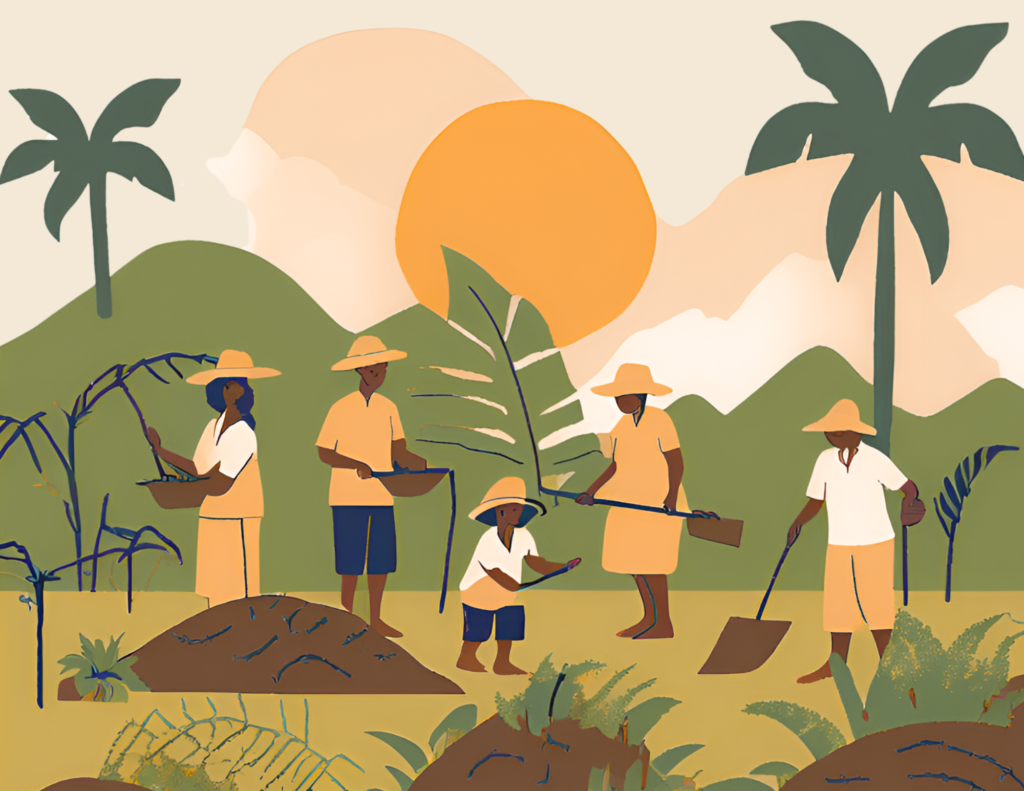Coconut Rhinoceros Beetle

Be Vigilant, Act Fast
Protecting Our Island Ecosystem from Invasive Threats
The Coconut Rhinoceros Beetle (CRB) is a highly destructive invasive species threatening Kaua‘i’s native and agricultural ecosystems. These beetles bore into coconut palms and other plant species such hala and banana trees, destroying their ability to grow and reproduce. Left unchecked, CRB infestations can cause widespread damage to vital habitats and local economies.


Signs of CRB Damage
Adult beetles feed on the inner spear or heart of the palm. Using their strong
front legs and horn, they burrow into the palm and suck the juices they
extract. The damage left behind can vary depending on the plant species.
45-Degree V-cuts
2-inch Boreholes
Scalloped Edges & Snowflake Patterns
Not just Coconut Trees
CRBs don’t just damage coconut trees—they also pose a serious threat to other palm species and can harm plants like hala and banana by feeding on their growing tissues. As their population grows, so does the risk to Hawai‘i’s broader ecosystem and agricultural crops..
Damage on Banana Trees
Hala Damage
How to Identify CRBs
If you find CRB-
Report Immediately
Follow the steps below to report your findings:
- Note your location and time
- Collect photos, beetles and larvae (if applicable)
- Click the button to the right to report to the 643-Pest team.
High Risk Materials
CRB lay eggs in decaying plant matter but they prefer coconut debris, tree
stumps, mulch, compost, and various gardening materials. CRB larvae (grubs)
have been found in other places like dirt, grass clippings, planter boxes, a dead
root of a living citrus tree, the tops of palms, and leaf litter.
Compost
Mulch
Whole Green Waste and Decaying Green Waste Piles
Dead Trees
Stumps
Potted Plants
Logs
Bagged Soil, Compost, Mulch, and Potting Mix
Best Management Practices
Geographic spread of CRB is largely due to human-vectored transportation
through movement of plants and high-risk materials from infested areas. Source materials from non-infested areas and treat when applicable. Below are resources that cater to specific groups that can help prevent the spread of CRBs.

Community Coordination
Broad-scale treatment is key to control the spread of CRBs. Proper green waste management and strong community coordination are crucial to controlling beetle populations. Without swift action, unchecked breeding grounds can fuel explosive population growth.
County Updates
The County of Kaua‘i, Office of Economic Development is working in partnership with state agencies, subject matter experts, and local organizations to help educate our community, share resources, and develop effective solutions.
The Coconut Rhinoceros Beetle (CRB) is a growing threat to our Kauai agriculture, ecosystems, and cultural identity. Early detection is critical, but relying on detector dog teams from other islands delays action and puts our island at greater risk.
That’s why, with support from the Hawai‘i Department of Agriculture, the County of Kaua‘i is partnering with Conservation Dogs of Hawai‘i to train Kaua‘i-based volunteer detector dog teams. Training will prepare residents and their furry companions to locate CRB breeding sites and make a real difference.
Mahalo to everyone who applied! Conservation Dogs has closed the application process and are currently training volunteer dogs.
For details on volunteer dog team benefits, criteria for dogs and handlers, program specifics, click this link.
Congratulations to the Winners!
Mahalo to all the students who submitted their artwork to help raise awareness about the invasive Coconut Rhinoceros Beetle (CRB) and protect our island’s culture and ecosystem!
Click here to view the list of awardees.
Additional Resources
For More information, click below.




